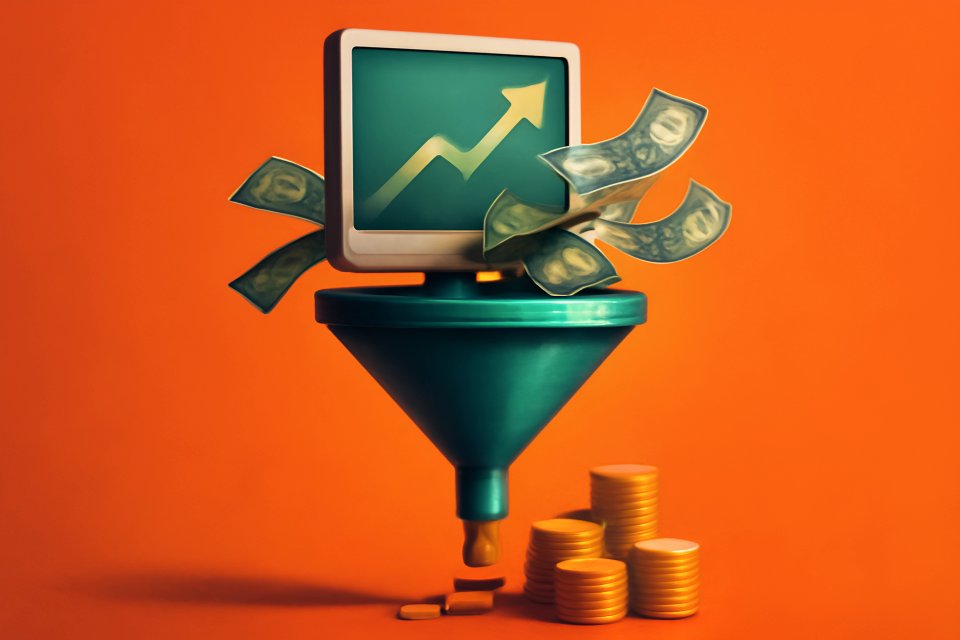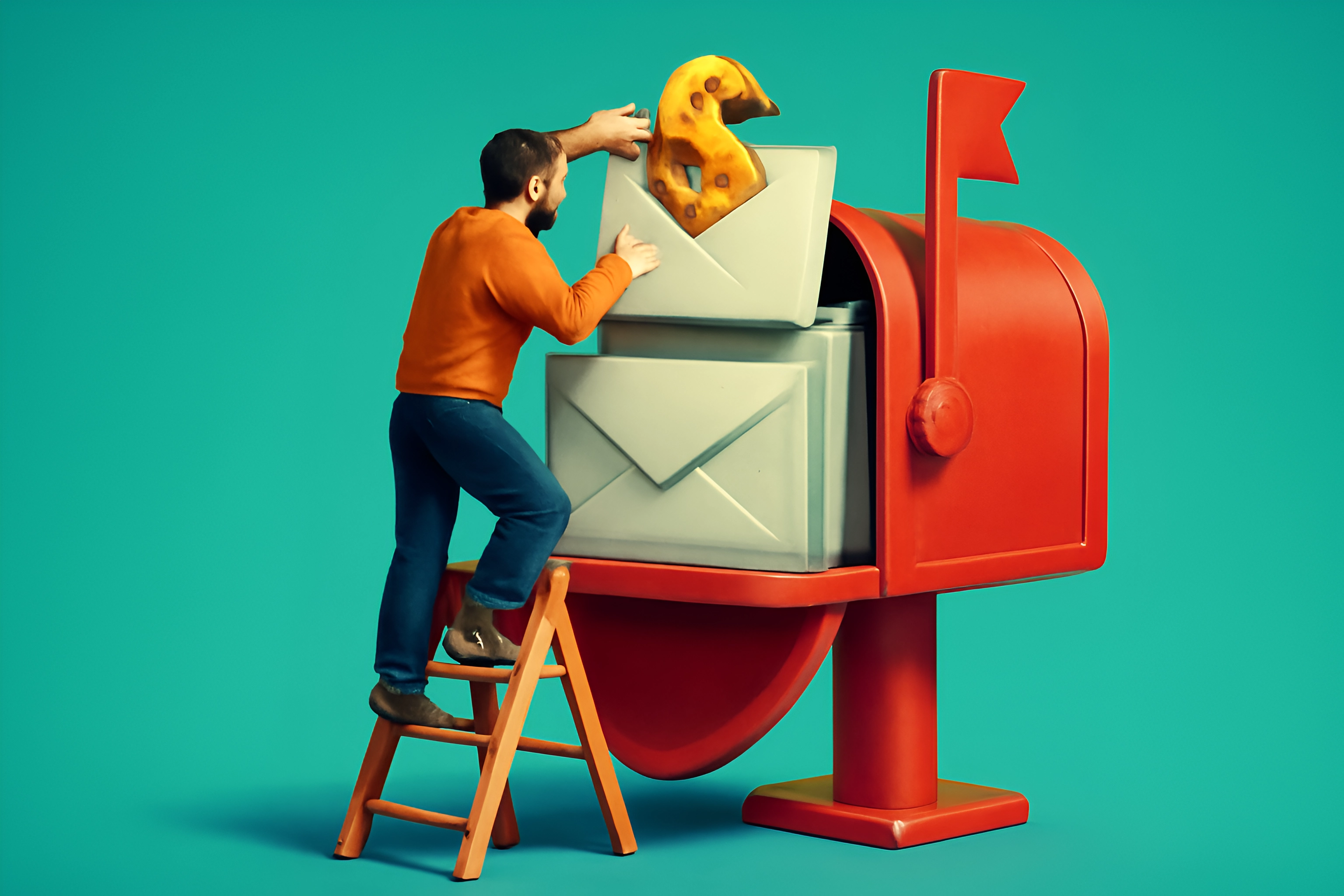
You’ve done the work. You’ve set up your affiliate funnel, you’re driving traffic, and you’re waiting for the sales to roll in. But instead of a flood of commissions, you’re hearing a faint… drip, drip, drip. Sound familiar?
This is the silent frustration that plagues countless aspiring affiliate marketers. You’re told that traffic is king, so you spend 90% of your energy fighting for eyeballs, only to see most of them vanish before they ever reach the checkout page. The truth is, your funnel is likely riddled with tiny, invisible leaks, and each one is costing you conversions, security, and the income you deserve.
But what if you could plug those leaks, one by one? This guide isn't about finding a magic bullet or a secret traffic source. It’s about making small, strategic improvements at every single step of the process. This is the real secret to maximizing income from affiliate marketing funnels—it’s about earning smarter, not just working harder for traffic that never converts. Get ready to dissect your funnel, find the profit leaks, and build a system that works for you, not against you.
The Anatomy of a High-Converting Affiliate Funnel
Before we start plugging leaks, let's agree on what we're fixing. For those new to the game, don't let the term "funnel" intimidate you. It’s simply a guided path you create to lead a potential customer from their first flicker of awareness all the way to purchasing a product through your affiliate link. It’s the bridge between their problem and your recommended solution.
Think of it as a deliberate, step-by-step journey. While the specifics can vary, a classic, high-converting affiliate funnel follows a proven structure. It’s a system designed to turn cold traffic into warm leads and, ultimately, into paying customers.
Here’s what that path typically looks like:
Traffic Source (Blog, Social, Ads) -> Lead Capture Page (Squeeze Page) -> Bridge Page / Email Sequence -> Affiliate Offer -> SaleWhy go through all this trouble instead of just sending people directly to an affiliate link? Because this method builds the two things most essential for long-term success: trust and an asset. By capturing an email address, you gain the ability to communicate directly with your audience, build a relationship, and pre-frame the offer. According to industry data, nurtured leads result in a 20% increase in sales opportunities, making this system vastly superior to the "one-and-done" approach of direct linking. Before you can optimize, you have to build it, and this structure is your blueprint for success.
Stage 1: Optimizing the Top of the Funnel (ToFu) - Attracting Qualified Traffic
It's Not About More Traffic, It's About the RIGHT Traffic
The biggest mistake you can make is trying to appeal to everyone. The goal at the top of your funnel isn't to get a flood of random visitors; it's to attract a targeted stream of people who are already aware of their problem and actively seeking a solution. These are the people who are primed to listen, engage, and eventually buy.
To do this, you must master keyword intent. Stop targeting broad, informational keywords like "what is email marketing." Instead, focus on long-tail keywords that signal a desire to buy, such as "best email marketing software for small business" or "ConvertKit vs. MailerLite review." By aligning content with user intent, you attract visitors who are much further down the buying cycle, dramatically increasing the odds they'll convert.
Furthermore, you must ensure a seamless match between your content and your offer. If your blog post is about "5 Ways to Improve Your Photography," your lead magnet and affiliate offer should not be about web hosting. This seems obvious, but it's the number one cause of high bounce rates. Your content must diagnose the problem that your affiliate product solves. Focus on understanding your actual audience’s needs and knowledge level and create content—whether it's an in-depth comparison post for your blog or a poll on social media—that speaks directly to their pain points before leading them into your funnel. This is the foundation of monetizing your blog effectively.
Stage 2: Optimizing the Middle of the Funnel (MoFu) - The Conversion Core
Plugging the Leaks: From Visitor to Lead
This is where the magic happens. The middle of your funnel is where a casual visitor decides whether to trust you enough to hand over their email address. This is your conversion core, and even tiny improvements here can lead to massive gains in income.
The Lead Capture Page (Squeeze Page)
Your lead capture page has one job and one job only: to convert a visitor into a lead. Your headline is 80% of the battle. It must instantly scream, "You are in the right place!" A/B test a headline that clearly states a benefit (e.g., "Get My 5-Day Welcome Sequence Template to Convert More Subscribers") against one that sparks curiosity (e.g., "The Email Sequence That Doubled My Open Rates"). According to HubSpot, systematically improving every step of the funnel, starting with the headline, is the core of conversion rate optimization.
Next, your lead magnet—the freebie you offer in exchange for an email—must be irresistible. It shouldn't be a generic ebook; it must be a "micro-solution" that provides a quick win and is directly related to the affiliate product you'll eventually promote. If you're promoting a keyword research tool, offer a "Top 10 Overlooked Keywords for Your Niche" checklist.
Finally, simplify the ask. Remove every single distraction from this page. That means no navigation menu, no social media links, and no links to other blog posts. Research shows that removing navigation from landing pages can increase conversions by up to 100%. All you need is a powerful headline, a few benefit-driven bullet points, and a single, glaringly obvious call-to-action button.
The Bridge Page & Email Sequence
Once someone opts in, don't just dump them on a generic "thank you" page. Use a bridge page. This is a simple page (or even a short video) that appears immediately after they subscribe. It's your chance to introduce yourself, build instant rapport, and "bridge" the gap between your lead magnet and the affiliate offer you'll be making. This is a core tenet of building and optimizing affiliate marketing funnels that truly connect with people.
This is also where your email nurture sequence takes over. This automated series of emails is crucial for optimizing affiliate funnel conversions over the long term. The power of automated email sequences lies in their ability to build trust methodically. A simple but effective sequence looks like this:
- Email 1 (Instant): Deliver the lead magnet and set expectations for what's coming next.
- Email 2 (Day 2): Provide pure value. Share a related tip, a personal story, or a quick win. No selling.
- Email 3 (Day 4): Introduce the affiliate product as the ultimate solution to their problem. Focus on the benefits and share your genuine experience with it.
- Email 4 (Day 5): Address common objections or share a case study. Use social proof like testimonials to build confidence and seal the deal.
Stage 3: Optimizing the Bottom of the Funnel (BoFu) - Sealing the Deal
From Click to Commission: The Final Push
You've built trust and nurtured the lead. Now it's time to get the click and secure the commission. This final stage is where you give your audience a compelling reason to buy through your link and not someone else's.
The single most powerful way to differentiate yourself is by adding your own unique bonuses. Ask yourself: "Why should someone buy from me?" The answer is your bonus stack. If you're promoting a course, offer a private coaching call. If you're promoting software, offer a set of custom templates. This strategy of offering unique bonuses and clear CTAs is the ultimate tie-breaker and gives you complete control over the offer.
Next, leverage urgency and scarcity, but do it ethically. If your affiliate partner is running a limited-time discount, shout it from the rooftops. If your own custom bonuses are only available for the next 48 hours, make that crystal clear. This isn't about creating false pressure; it's about using real deadlines to help people who are on the fence make a decision, a tactic proven to be highly effective when used with personalized deadlines.
Finally, make your call-to-action (CTA) impossible to ignore. Banish weak phrases like "Click Here" from your vocabulary. Instead, use strong, benefit-oriented language that paints a picture of the desired outcome. Use a CTA like, Yes, I Want to Double My Traffic with [Product Name]! This connects the click to the result they crave, giving them that final, emotional push to act.
Stage 4: The Post-Funnel - Maximizing Lifetime Value
The Sale is Just the Beginning
Most affiliate marketers think their job is done once the commission is earned. But the top earners know that the sale is just the beginning of a much more profitable relationship. This expert-level step is what separates a one-time payday from a sustainable, long-term income stream.
The first step is to segment your email list. As soon as someone buys through your link, tag them as a "Buyer" in your email service provider. This is now your most valuable audience segment. You can send them advanced tips on how to get the most out of their purchase or promote complementary affiliate offers that you know they'll find useful.
A week or so after the purchase window, send a simple, personal email. Ask them if they have any questions about using the product they bought. This small gesture builds incredible goodwill and positions you as a trusted advisor, not just a marketer. It transforms a transaction into a relationship.
From there, you can strategically cross-sell. If they bought a premium website theme, they will likely need a great hosting provider, a security plugin, or a performance optimization tool. By promoting relevant, high-quality products to your list of proven buyers, you dramatically increase the lifetime value of every single lead that enters your funnel. This is how you truly scale your business.
The Golden Rule: Track, Test, and Iterate
You Can't Optimize What You Don't Measure
Here’s the ultimate truth of funnel optimization: it’s a game of numbers. Gut feelings are great for generating ideas, but data is what generates profit. To truly maximize your income, you must adopt a mindset of continuous optimization and make decisions based on cold, hard facts.
You need to know your numbers inside and out. At a minimum, you should be tracking these key metrics to identify where your funnel is leaking profit.
| Metric | What It Tells You | Goal |
|---|---|---|
| Landing Page Conversion Rate | How effective your page is at turning visitors into leads. | Improve |
| Email Open & Click-Through Rate | How engaged your subscribers are with your message. | Improve |
| Affiliate Link Click-Through Rate | How well you're persuading leads to check out the offer. | Improve |
With these numbers as your baseline, you can begin A/B testing. The concept is simple: change one thing at a time and measure the result. Use A/B testing to optimize your landing page headline, your email subject line, or your CTA button color. By isolating a single variable, you'll know with certainty what works and what doesn't. You can start by setting up Google Analytics goals to get a clear picture of your funnel's performance and then dive deeper by using data-driven insights to make every decision count.
Conclusion: Build Your Profit-Generating System
Stop thinking of your affiliate efforts as a series of one-off promotions. Maximizing income from affiliate marketing funnels is about building a reliable, repeatable system. It’s a process of continuous, small optimizations—not a single grand gesture—that transforms a leaky bucket into a profit-generating machine. You can see a real-world example of these optimization principles in action to understand how powerful this can be.
Don't get overwhelmed by the possibilities. The path to earning smarter starts with a single step. Pick just ONE stage of your funnel this week—your landing page headline, your second email, your CTA button—and apply one tip from this guide. That is the first, most important step toward building a funnel that truly works for you.
Which part of your affiliate funnel are you going to optimize first? Share your plan in the comments below














